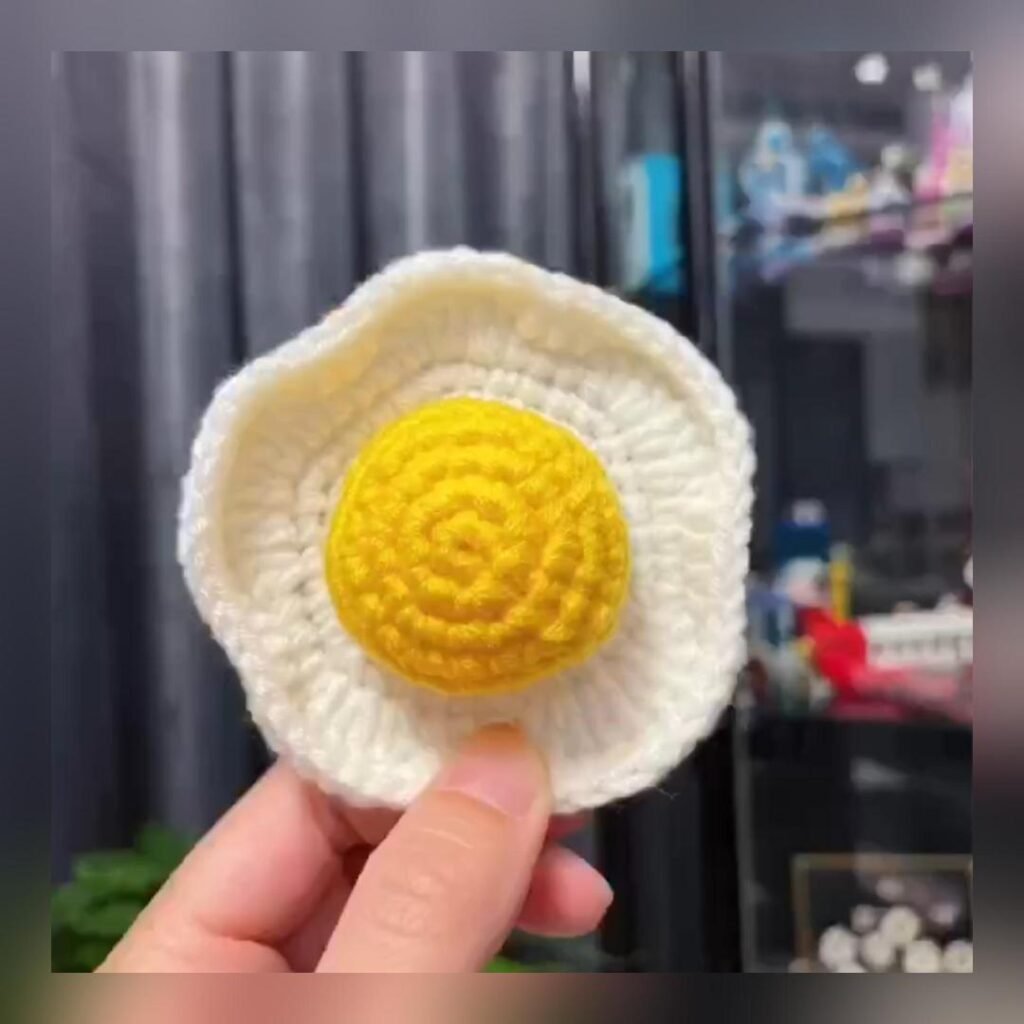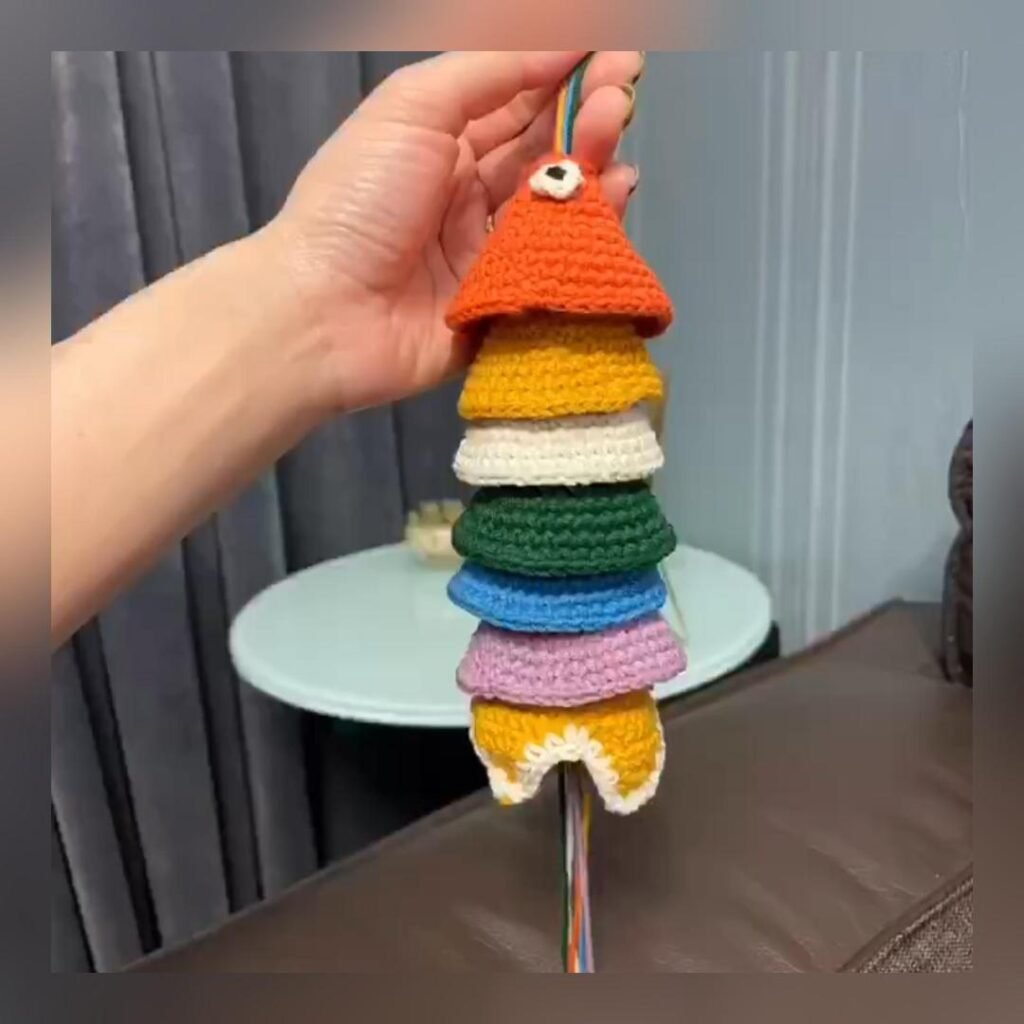How to start crochet for cheap?

Starting crochet does not have to be expensive, and there are many ways to begin without breaking the bank. Here are some tips to help you start crochet for cheap:
Borrow or Buy Used Supplies: Consider borrowing crochet supplies from friends or family members who already crochet. Additionally, you can buy used crochet hooks and yarn from online marketplaces or thrift stores. These options will be more affordable than purchasing new supplies.
Use Affordable Yarns: When starting out, consider using acrylic or cotton yarn, which are typically more affordable than specialty yarns like wool or silk. Many craft stores also have sales and coupons, so keep an eye out for discounts on yarn.
Find Free Patterns: Many websites and blogs offer free crochet patterns. Check out sites like Ravelry, AllFreeCrochet, and CrochetSpot to find a variety of free patterns for beginners.
Watch Free Tutorials: YouTube is a great resource for free crochet tutorials. There are many experienced crocheters who share their knowledge and techniques on the platform, making it easy for beginners to learn from the comfort of their own home.
Start with Small Projects: Instead of jumping straight into a large project like a blanket, start with small projects like dishcloths, coasters, or hats. These projects use less yarn and can be completed quickly, allowing you to gain confidence and practice your skills without spending too much money.
Remember, crochet is a hobby that can be pursued at any budget. With a little creativity and resourcefulness, you can start crochet for cheap and enjoy the process of creating beautiful handmade items.
What should I know before crocheting?
Before crocheting, there are a few things you should know to help you get started and succeed in your crochet projects:
Understanding Crochet Terminology: Crochet has its own terminology, and it’s essential to learn the basic crochet stitches and what they mean. Some common terms include chain, single crochet, double crochet, and treble crochet. Understanding these terms will help you read crochet patterns and follow tutorials.
Choosing the Right Yarn and Hook: Different crochet projects require different types of yarn and hook sizes. It’s important to choose the right yarn and hook for your project to achieve the desired outcome. The label on the yarn will indicate the recommended hook size and tension or gauge.
Tension and Gauge: Tension or gauge refers to how tightly or loosely you crochet. It’s important to maintain consistent tension throughout your project to ensure that the finished product has a uniform appearance. To achieve the right tension or gauge, practice working with your chosen yarn and hook until you can match the recommended gauge for your project.
Holding the Yarn and Hook: Everyone holds their yarn and hook differently, but it’s important to find a comfortable grip that allows you to work efficiently. Experiment with different grips until you find one that feels natural and comfortable for you.
Practice the Basic Stitches: Crochet is based on a few basic stitches, including chain, single crochet, double crochet, and treble crochet. These stitches form the foundation of most crochet projects. Practice these stitches until you feel comfortable with them before moving on to more complex patterns.
Reading Crochet Patterns: Crochet patterns use symbols and abbreviations to represent different stitches and instructions. Take some time to learn how to read crochet patterns and understand the symbols used. This will make it easier to follow patterns and create beautiful projects.
By understanding these key concepts, you will be better equipped to start crocheting with confidence and successfully complete your crochet projects.
Why is Woobles so expensive?

It’s possible that you may be referring to a specific brand or type of yarn called “Wooble,” but as of now, I’m not aware of any widely recognized yarn by that name. However, in general, the price of a particular yarn can be influenced by several factors, including:
Fiber Content: Yarn made from natural fibers such as wool, alpaca, cashmere, and silk tends to be more expensive than synthetic fibers like acrylic. This is due to the cost of sourcing and processing natural materials.
Production Process: Some specialty yarns require intricate production processes, such as hand-dyeing, spinning, or blending multiple fibers. These additional steps can contribute to a higher price point.
Brand Reputation: Established yarn brands with a reputation for quality and luxury may command higher prices based on their brand recognition and the perceived value of their products.
Dyeing Techniques: Yarns that feature complex dyeing methods, unique color combinations, or hand-painted designs often come with a premium price tag due to the artistry involved.
Specialty Yarns: Certain yarns, such as those containing rare fibers or featuring special characteristics like self-striping or marling, are considered specialty yarns and are typically priced higher due to their uniqueness.
It’s important to note that the cost of yarn can vary widely based on these and other factors. When evaluating the price of a particular yarn, consider its intended use, the quality of the materials, and whether it aligns with your project requirements. Additionally, shopping during sales or exploring alternative yarn options can help manage costs for your crochet projects.
Do Woobles actually teach you to crochet?
I’m not specifically aware of a brand or organization called “Woobles” that offers crochet instruction or tutorials. However, there are numerous resources available online and in various communities that provide excellent crochet tutorials and lessons for beginners and experienced crocheters alike.
If you’re interested in learning to crochet or enhancing your crochet skills, I recommend exploring the following resources:
Online Video Tutorials: Websites such as YouTube feature a wealth of crochet tutorial videos created by experienced instructors. These videos cover a wide range of topics, from basic stitches to advanced techniques.
Crochet Blogs and Websites: Many crochet enthusiasts and experts maintain blogs or websites where they share detailed instructions, tips, and patterns. These resources can be valuable for learning new stitches and project ideas.
Local Craft Stores and Community Centers: Some craft stores offer in-person crochet classes or workshops, providing hands-on guidance and support for beginners. Community centers and libraries may also host crochet groups or classes.
Crochet Books and Magazines: There are numerous books and magazines dedicated to crochet, offering step-by-step instructions, patterns, and inspiration for crocheters of all levels.
Online Crochet Communities: Joining online crochet communities and forums can connect you with other crocheters who are willing to share their knowledge and provide assistance as you learn.
If “Woobles” does indeed offer crochet instruction, I would recommend researching their offerings and reviews to determine if they align with your learning goals. Additionally, always consider multiple sources of instruction to gain a well-rounded understanding of crochet techniques and practices.
Is Woobles crochet kit worth it?

As I mentioned earlier, I’m not specifically aware of a brand or organization called “Woobles” that offers crochet kits. Therefore, I cannot provide a direct assessment of the value or quality of their products.
When evaluating any crochet kit, it’s important to consider several factors to determine if it is worth the investment. Here are a few aspects to consider:
Included Materials: Check what materials are included in the kit. Does it provide the necessary yarn, hooks, and any other accessories required for the project? Assess the quality and quantity of the materials to ensure they meet your expectations.
Pattern/Instruction Quality: Examine the pattern or instruction booklet provided with the kit. Is it clear, well-written, and easy to follow? Look for comprehensive explanations, stitch diagrams, and any additional guidance that can help you successfully complete the project.
Project Complexity: Consider your skill level and the complexity of the project included in the kit. Ensure that the project aligns with your current abilities or offers an opportunity to learn and improve your crochet skills.
Price Comparison: Compare the cost of the kit with the individual cost of purchasing the materials and pattern separately. Sometimes, purchasing the components individually can be more cost-effective. However, kits often offer convenience and may include exclusive patterns or materials that make them worthwhile.
Reviews and Recommendations: Look for reviews or recommendations from other crocheters who have used the kit. Their experiences can provide valuable insights into the quality, ease of use, and overall satisfaction with the product.
Ultimately, the worth of a crochet kit depends on your personal preferences, needs, and budget. It’s always a good idea to research and compare different options before making a purchase.
Is Woobles actually easy?
As I mentioned earlier, I’m not specifically aware of a brand or organization called “Woobles.” Therefore, I cannot provide a direct assessment of how easy their patterns or products are.
In general, the ease of a crochet pattern or project depends on several factors, including your skill level, the complexity of the pattern, and the quality of the instructions provided.
If you’re new to crochet, it’s important to start with simple projects that allow you to practice basic stitches and techniques. As you gain more experience, you can gradually move on to more complex projects that challenge your skills.
When evaluating the ease of a crochet project, consider the following factors:
Skill Level: Check the skill level indicated on the pattern or in the kit description. Ensure that it aligns with your current abilities or offers an opportunity to learn and improve your crochet skills.
Pattern Clarity: Examine the pattern or instruction booklet provided with the kit. Is it clear, well-written, and easy to follow? Look for comprehensive explanations, stitch diagrams, and any additional guidance that can help you successfully complete the project.
Complexity: Consider the complexity of the project, including the number of stitches, rows, and any special techniques required. Determine if the project is within your skill level and allows you to practice new techniques without being too overwhelming.
Time Commitment: Assess the estimated time required to complete the project. Ensure that you have enough time to dedicate to the project and that it aligns with your schedule and commitments.
If you’re unsure about the ease of a particular project or pattern, consider reaching out to other crocheters or online communities for advice and support. You can also practice with small samples or swatches before committing to a larger project to build your confidence and skills.

Can you just buy Woobles patterns?
I’m not specifically aware of a brand or organization called “Woobles,” so I cannot provide specific information about their offerings. However, in the world of crochet, it’s common for designers and companies to offer patterns for sale independently of kits or materials.
If “Woobles” offers crochet patterns, it’s likely that you can purchase them separately from their kits or other products. Many designers make their patterns available for purchase through various platforms, including their own websites, online marketplaces, and craft stores.
To find out if “Woobles” sells patterns separately, you can visit their official website or explore online marketplaces where crochet patterns are sold. Additionally, you can search for “Woobles crochet patterns” using an internet search engine, which may lead you to their pattern offerings, if available.
When purchasing crochet patterns from any source, be sure to review the details provided, including the skill level, materials required, and user reviews if available. This will help you determine if the patterns align with your preferences and skill level.
